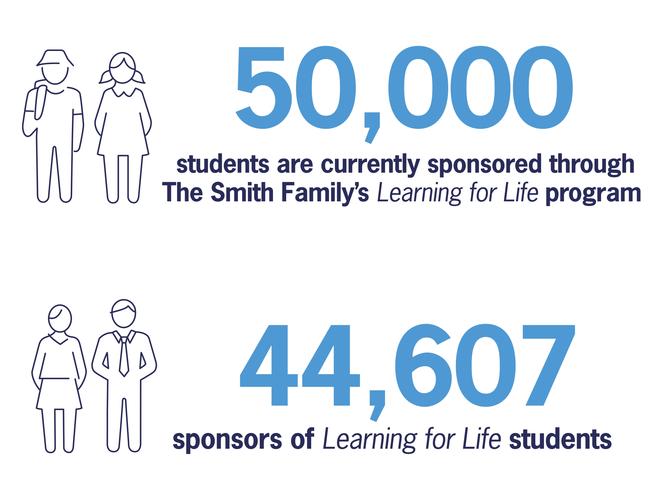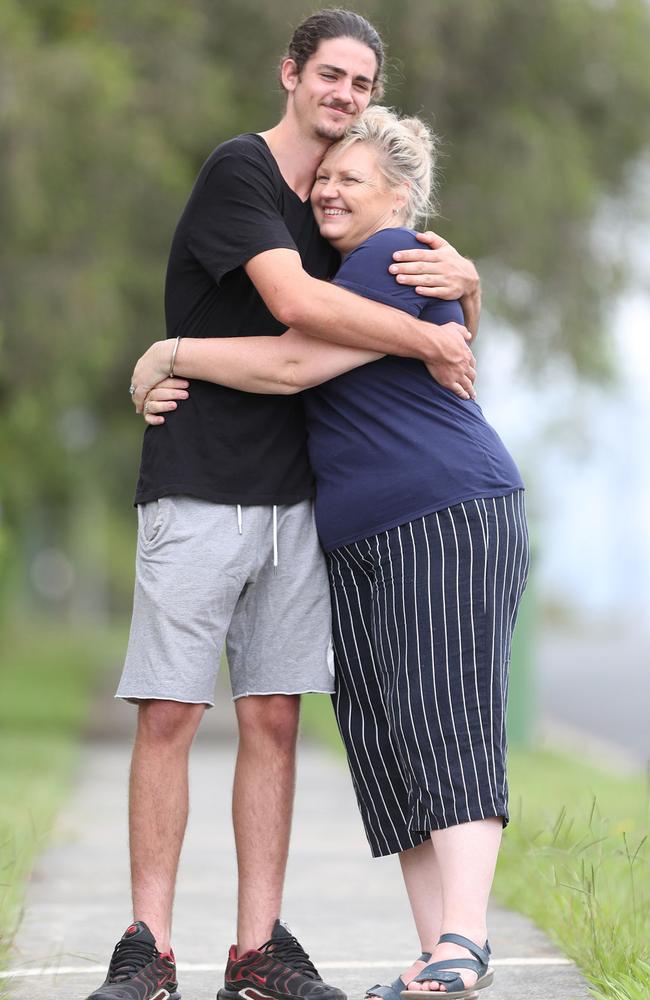The digital divide pushing kids closer to poverty line
The number of Australians sponsoring a child for essential school needs has doubled while organisations like World Vision that send donations overseas have seen a dramatic drop.
Kids
Don't miss out on the headlines from Kids. Followed categories will be added to My News.
Charity now begins at home for an increasing number of people who are choosing to sponsor an Australian child through school, rather than send their donation dollar overseas.
New data from independent children’s charity The Smith Family shows in the past five years the number of Australians sponsoring a child for essential school needs has doubled.
Research also showed that more than half of Australians say they are seeing children in poverty in their communities, with the digital divide creating a wider gap.

It comes as other charities are seeing a significant decline in number of people sponsoring children internationally, the most recent figures from World Vision have seen the levels of sponsorship drop from $172.3 million in 2016 to $137.5 million in 2018.
Child Fund Australia have also seen a decline in sponsorship dollars as has Plan Australia.
A spokesman for World Vision said the charity space had become fragmented as more people focused on local needs and issues.
The Smith Family‘s CEO Dr Lisa O’Brien said one in six Australian children are living in poverty and she is concerned the catastrophic bushfires will push more families over the edge.
“The effects of these fires will be felt in many ways by our families. Of particular concern are the longer term economic impacts – business loss, disruption and downturn” she said.
“We are expecting there will be more families pushed into extremely difficult financial situations because of these fires.”

Dr O’Brien said recent research done by The Smith Family revealed Australians were increasingly concerned about the children in poverty in their local communities.
“We have actually grown our footprint but demand outstrips supply,” she said, adding that the digital divide has created a bigger gap between the haves and the have nots.
“Homework is a battle for many families but imagine if you don’t have the data and have to go to the library to do your homework,” she said.
“We know one-third of families don’t have access to a reliable connection to the internet, or they are using computer equipment that is less than reliable.
“Or the stigma of going over to the cart that has the loaner laptops because you don’t have your own device.”

Data from Edstart shows the average household can spend $1578 on technology a year and the 2018 Programme for International Student Assessment (PISA) report showed Australian students are about a year behind in key subjects but that the gap is far worse for students from lower socio economic areas who are approximately three years behind.
“We know students who feel excluded, or like they don’t fit in, can start to disengage from their learning,” Dr O’Brien said.
“These schoolchildren are missing out on things that others take for granted. Even the basics like pens and exercise books, or not having a school uniform that fits properly, or access to the internet at home to support their studies or do their homework.”
The Smith Family are launching their Back To School appeal today and are hoping to help an additional 9000 children with their Learning for Life sponsorship programs that operates in nearly 700 schools nationally, and already supports 50,000 students across 91 regions.

Belinda Dunn, is a single mum of four from Penrith in Sydney with three children in school, and said sponsorship dollars make the difference between her children being part of the crowd or outcast.
“It really starts to affect them if they feel different and they want to know why they don’t have a pair of shoes or a uniform and that affects them as a human being, it helps them socially as well so they are not going to school in a different coloured short to their peers and they don’t have to worry about what others are thinking of them,” she said, adding her children send hand-drawn cards and letters to their sponsors.
Andrew Pierpoint, President of the Australian Secondary Principals’ Association, said he has observed the digital divide was creating a larger gap now between students.
“It is becoming wider within groups of students and also between parents and caregivers,” he said.
“Organisation like The Smith Family, Beyond Blue and headspace are just pivotal to us.”

Brisbane mother of three Verrity Wandel had sponsorships support her three children through school, and her youngest, Josh, graduated last year and has just signed up as an electrical apprentice. He says when he gets on full wages he also wants to give back.
Ms Wandel said the sponsorship helped with things like bus passes and after school tutoring.
“I was a single mum with three kids living on $12.20 fortnight child support. With three children even to be able to afford three lots of school photos was a challenge Joshua was the only I could afford to send on school camp. My children started every year with full school uniform and books and I was able to do that because of the Smith Family,” she said.
“It enabled them to feel like everyone else. They always felt different because they didn’t have a dad. It made it easier for them – they felt they were normal. They didn’t have to go without.”
To sponsor a child through The Smith Family visit
https://www.thesmithfamily.com.au/sponsor-a-child/australia
KEY STATS
* 55% of Australians surveyed said they see children and families affected by poverty in their local area
* 1 in 6 children are living in poverty
* 61% of people are concerned children don’t have the key learning materials they need for school
* 20% of Smith Family Learning for Life students are deprived of things like money to pay for classes or activities outside school, school trips and excursions and had limited access to Wi-Fi.
* 1 in 5 of Smith Family cohort are deprived of internet access at home
Originally published as The digital divide pushing kids closer to poverty line
